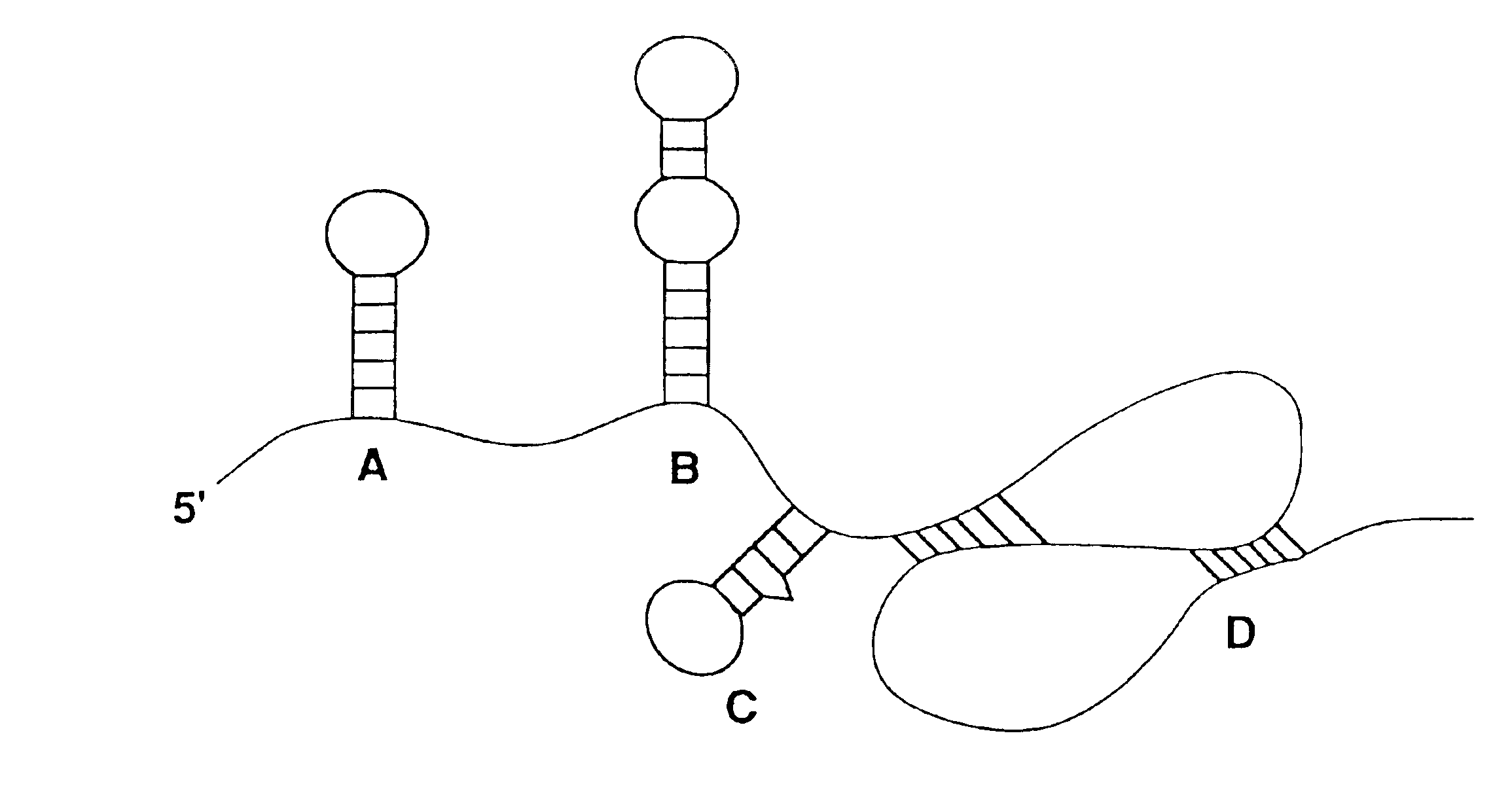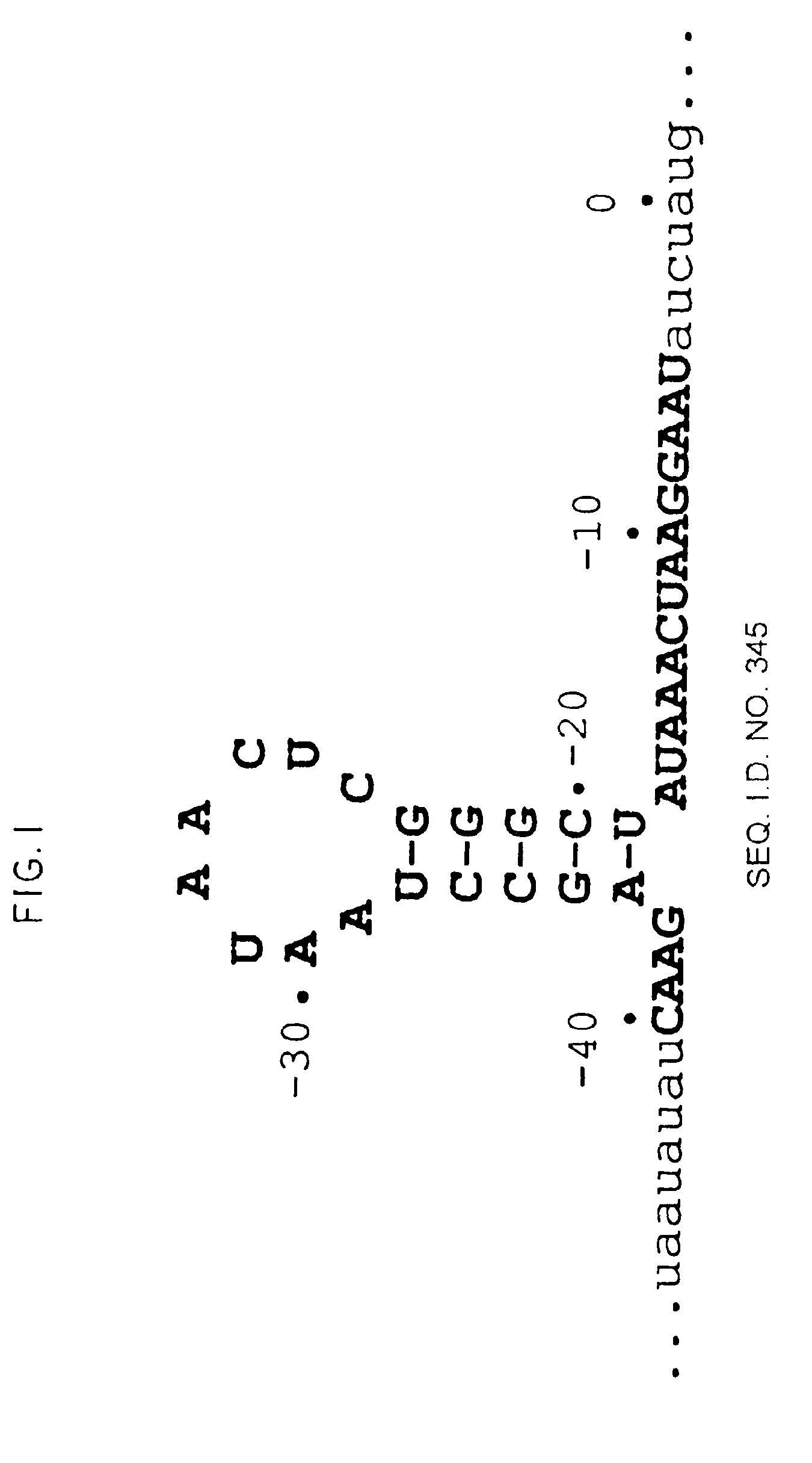Nucleic acid ligand binding site identification
a nucleic acid ligand and binding site technology, applied in the direction of dna/rna fragmentation, directed macromolecular evolution, peptide/protein ingredients, etc., can solve the problems of little knowledge concerning the stability effect of unpaired loop nucleotides, little is known about tertiary structures and three-dimensional shapes, and the effect of amplifying in vitro
- Summary
- Abstract
- Description
- Claims
- Application Information
AI Technical Summary
Benefits of technology
Problems solved by technology
Method used
Image
Examples
example 1
Selection of RNA Inhibitors of T4 DNA Polymerase
[0172]A 110 base single-stranded DNA template for in vitro transcription was created as shown in FIG. 2 by ligation of three synthetic oligonucleotides (Tables 1, 3, 4 and 5) in the presence of two capping oligonucleotides (Tables 1 and 2). One of the template-creating oligos was also used as the 3′ primer in reverse transcription of the in vitro transcript and subsequent amplification in polymerase chain reactions (PCRs) (Innis et al. (1988) Proc. Natl. Acad. Sci. USA 85:9436-9440). One of the capping oligos (1) contains the information required for T7 RNA polymerase transcriptional initiation and sufficient sequence complementarily to the cDNA of the in vitro transcript to serve as the 5′ primer in the PCR amplification steps. The DNA template encoded an RNA which contains the entire RNA recognition site for T4 DNA polymerase except that a completely random sequence was substituted in place of the sequence which would encode the wild...
example 2
Isolation of a Specific RNA Ligand for HIV Reverse Transcriptase
[0180]The reverse transcriptase activity of HIV-1 is composed of a heterodimer of two subunits (p51 and p66) that have common amino termini. The extra carboxyterminal region of the larger peptide comprises the RNaseH domain of reverse transcriptase; the structure of that domain has recently been determined at high resolution.
[0181]It has been previously shown that this HIV-1 reverse transcriptase directly and specifically interacts with its cognate primer tRNALys3 to which it was experimentally cross-linked at the anti-codon loop and stem. It was also found that only the heterodimer exhibited this specific RNA recognition; neither homodimeric species of reverse transcriptase bound with specificity to this tRNA.
[0182]Two template populations (with approximately 1014 different sequences each) were created for use in SELEX by ligation. One template population was randomized over 32 nucleotide positions, using fixed sequenc...
example 3
Isolation of Specific RNA Ligand for Bacteriophage R17 Coat Protein
[0198]SELEX was performed on the bacteriophage R17 coat protein. The protein was purified as described by Carey et al., Biochemistry, 22, 2601 (1983). The binding buffer was 100 mM potassium acetate plus 10 mM dithiothreitol plus 50 mM Tris-acetate pH 7.5. Protein and RNA were incubated together for three minutes at 37° C. and then filtered on nitrocellulose filters to separate protein-bound RNA from free RNA. The filters were washed with 50 mM Tris-acetate pH 7.5. Protein was at 1.2×10−7M for the first four rounds of SELEX and at 4×10−8 for rounds five through 11.
[0199]The starting RNA was transcribed from DNA as described previously. The DNA sequence includes a bacteriophage T7 RNA polymerase promoter sequence that allows RNA to be synthesized according to standard techniques. cDNA synthesis during the amplification portion of the SELEX cycle is primed by a DNA of the sequence:[0200]cDNA primer (PCR primer 1): 5′GT...
PUM
| Property | Measurement | Unit |
|---|---|---|
| pH | aaaaa | aaaaa |
| pH | aaaaa | aaaaa |
| dissociation constant | aaaaa | aaaaa |
Abstract
Description
Claims
Application Information
 Login to View More
Login to View More - R&D
- Intellectual Property
- Life Sciences
- Materials
- Tech Scout
- Unparalleled Data Quality
- Higher Quality Content
- 60% Fewer Hallucinations
Browse by: Latest US Patents, China's latest patents, Technical Efficacy Thesaurus, Application Domain, Technology Topic, Popular Technical Reports.
© 2025 PatSnap. All rights reserved.Legal|Privacy policy|Modern Slavery Act Transparency Statement|Sitemap|About US| Contact US: help@patsnap.com



